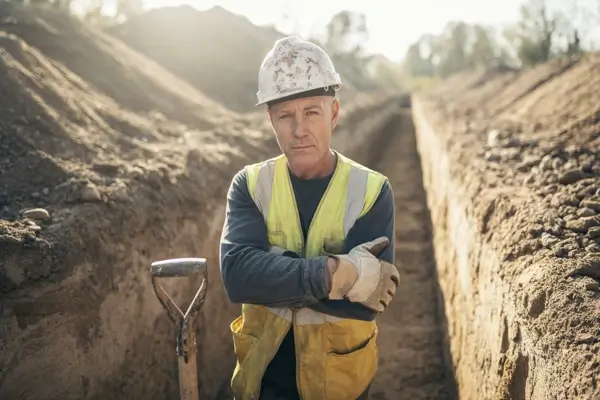Dig out trenches Risk Assessment

A comprehensive Risk Assessment for digging out foundation trenches.
Digging trenches, commonly referred to as trenching, is a critical construction technique employed for a wide range of purposes. Here are some of the primary applications of trenching:
Trenches are essential for the safe and efficient installation of underground utilities. This includes laying pipes for essential services such as potable water, natural gas, sewage, and electrical cables. By burying these utilities underground, trenches help prevent potential hazards and service interruptions.
Trenches play a pivotal role in providing a stable base for various structures, including buildings, retaining walls, and dams. By excavating trenches, construction teams can ensure proper support and weight distribution, which is crucial for the integrity and longevity of these structures.
Trenches can be strategically excavated to redirect water away from critical infrastructures, such as homes and commercial buildings. This helps to mitigate the risks of flooding and erosion, preserving the foundation and surrounding landscape from water damage.
In landscaping projects, trenches are utilised to create defined areas for planting vegetation or installing landscape features. These trenches can assist in managing soil depth, facilitating drainage, and organising plant beds, contributing to both aesthetic appeal and functional outdoor spaces.
Trenches are also vital for protecting underground cables from potential damage. By keeping cables safely encased within trenches, they are shielded from environmental factors, physical wear, and the risk of accidental disconnection, thus ensuring reliable performance and maintenance of electrical systems.
In summary, trenching is a multifaceted process that serves not only to install necessary utilities but also to enhance structural stability, manage water flow, design landscapes, and protect essential cables.
This document is:
- Recognised by local authorities
- Recognised by principal contractors
- Suitable for CDM sites
- Approved by H&S managers
It increases your chance of winning tenders and has been written by trained health and safety professionals.
If you want others to have confidence in your company, download and buy the proper documents today.
As with all our documents, our risk assessments are in Word™ format, available for instant download and use, and only need to be bought once.
Once you buy and download this document, it’s yours for life to use repeatedly.
Download this risk assessment today, put your company details on it, and use it immediately.
Give people confidence in you, your company, your products and services.
Some sample text from this document reads:
‘Falling from height (into excavation)'
• Serious or fatal injury could occur if a worker falls from a height into an excavation.
• Physical barriers are to be erected around the excavation
• Appropriate ladders, correctly secured and extended one metre above floor level, should be used to enter and exit the excavation
• Adequate shoring or battering of the sides to a suitable angle to prevent collapse
• The area around the excavation should have good housekeeping with trip hazards removed
• Vehicles to be kept away from excavations where possible
Why not browse the HSEDocs catalogue of method statements, risk assessments, COSHH assessments, or industry-specific packages?
GET THIS DOCUMENT
£8.99+VAT
- Available in Word™
- Fully customisable
- Add your Company Logo
- UK & EU Compliant

 CART
CART 